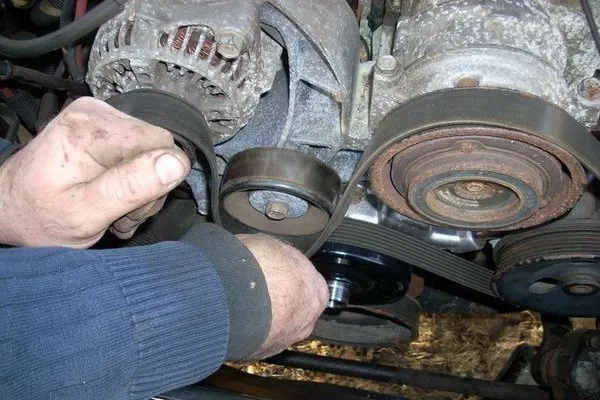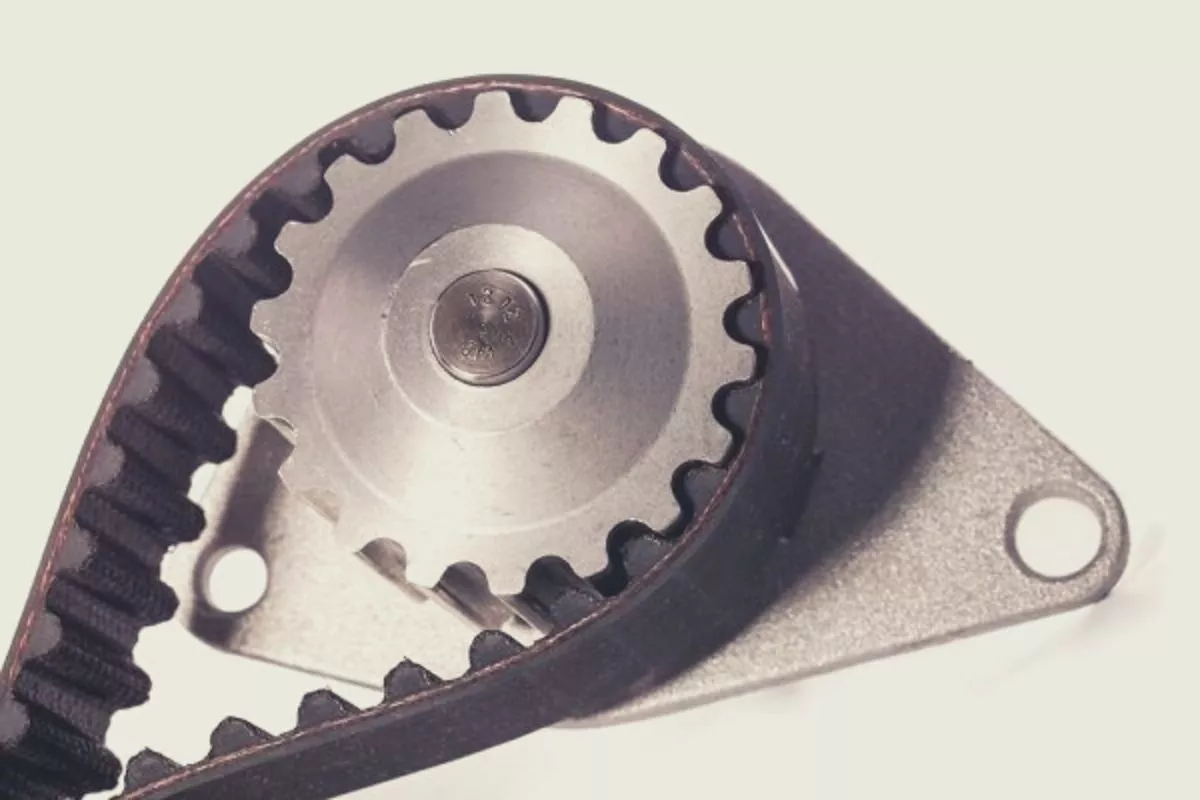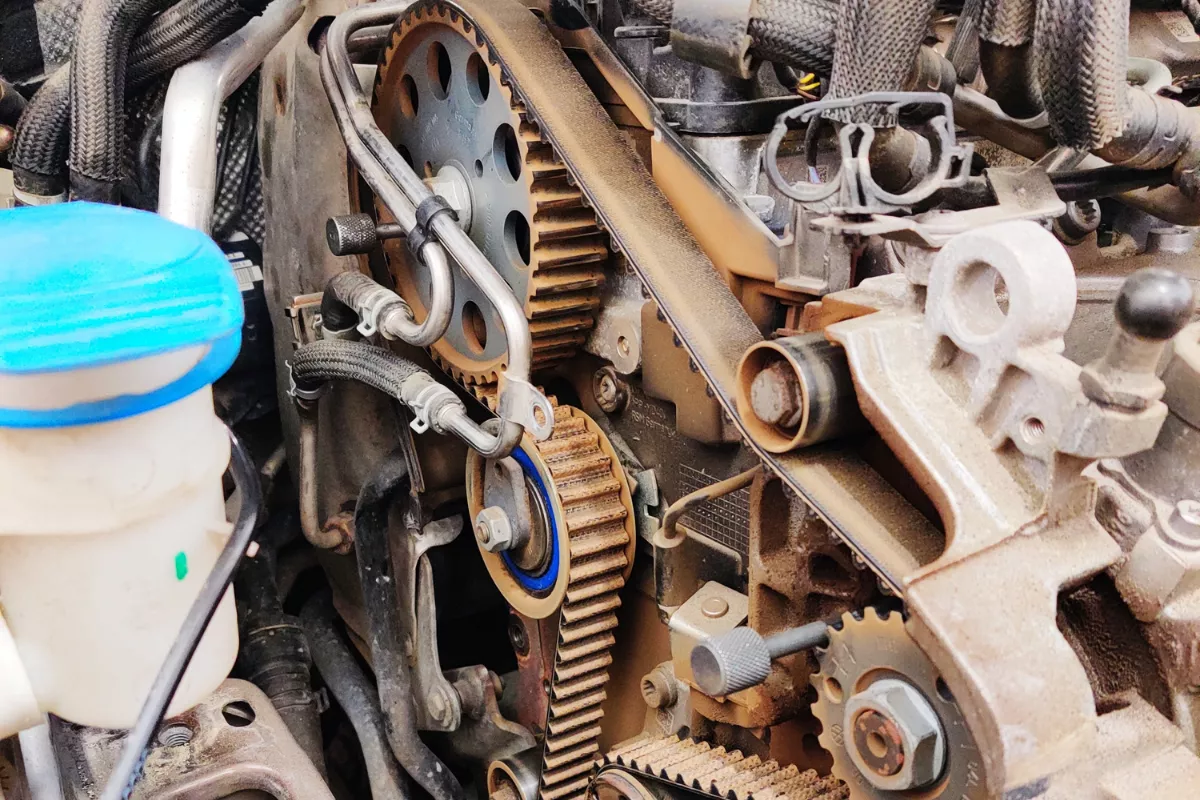The engine of the car is one fascinating invention due to its complex functionality. At first, we would think that an engine only drives the wheels through the shaft and axles. However, an engine also drives various car components such as pumps and an A/C compressor with the help of belts.
With one rotation of the crankshaft, various car components through belts rotate with it as well. It is like hitting two birds with one stone, except these belts hit more than that. The two belts that are responsible for keeping an engine running are the serpentine belt and timing belt.
These two may be both labeled as belts, but they are built differently and serve different functions. With that being said, let’s explore the functions of serpentine and timing belts and see what the differences between the two are.
1. What is a Serpentine Belt?
What are the functions of serpentine belts?
A serpentine belt is used to drive key engine accessories such as the water pump, oil pump, alternator, power steering, and cooling fan. This means that the serpentine belt helps keep the engine run in a good or ideal condition at all times.

Most cars come with an exposed serpentine belt
Without the serpentine belt, the engine will be running hot at all times as the oil pump and cooling fan will not function. Your electrical components connected to the alternator will also not run since it is not generating enough rotations to provide power to your car.
In modern cars, one serpentine belt is sufficient to drive the various engine accessories. Classic cars used to install two or three serpentine belts for ideal engine operation. Serpentine belts differ depending on the layout of the engine and its accessories per manufacturer.
How long do serpentine belts last?
With the advancement of technologies, serpentine belts are now made to last for a very long time. On average, a modern serpentine belt will last for around 95,000 km to 160,000 km. That’s around five to eight years of driving the car if you use it daily.
Previous serpentine belts tend to last for around 80,000 km only. The longevity of your serpentine belt will depend on how you maintain your car. Most serpentine belts break due to misalignment of the pulleys and defective bearings. This creates more stress that leads to breakage.
What are the symptoms of a faulty serpentine belt?
The first symptom is when you are hearing noises in the engine. A faulty serpentine belt will produce squeak sounds and screech sounds which will also result in your car illuminating the ‘Check Engine’ light. Once your serpentine belt breaks, then expect to face engine problems.

You are likely to encounter an engine overheat if your serpentine belt is not working
Driving without a serpentine belt is not ideal. The reason for this is that you will have a hard time steering the car as the power steering pump is not working. Moreover, your car’s A/C will not function, and the engine will overheat.
How much does it cost to replace a serpentine belt?
Luckily, serpentine belts are inexpensive to get. The price will vary depending on the engine design of a model and the recommended belt of the manufacturer. On average, you can get a serpentine for around Php 3,000 for sedans to Php 12,000 mostly for SUVs.
Thanks to the advancement of technologies, you will need one serpentine belt only. But of course, you will still have to pay for labor.
>>> Related: How does a timing belt in your car engine work?
2. What is a Timing Belt?
What are the functions of a timing belt?
On the other hand, a timing belt is used to drive the camshaft through the crankshaft. A camshaft is a rotating metal that contains cams that are used for valve timing. This is the reason why the engine has a great valve operation timing as for every two rotations of a crankshaft, there is a single rotation of a camshaft.

A timing belt is important to crank your engine
The timing belt is one of the most important car components as they keep your engine cranking in optimum operation. Without the timing belt, your engine will misfire causing loss of power. This type of belt is hidden within a crankcase so you will hardly see it.
How long do timing belts last?
Just like the serpentine belt, a timing belt also lasts around the same numbers. You can expect to replace your timing belt every 95,000 km to 165,000 km. Some manufacturers would claim that the longevity of their timing belt lasts longer than the said numbers, but it is better to have it replaced once shows symptoms of it being faulty.
What are the symptoms of a faulty timing belt?
It is hard to tell whenever your timing belt is already faulty as it is hidden under the crankcase. You have to know the amount of power your car delivers every time you step on a certain level of the gas pedal. If the power is lesser than it should, then it could be that the timing belt is already faulty.

Follow your preventive maintenance schedule to avoid faulty timing belts
With that being said, you should follow the prescribed preventive maintenance schedule of your car to avoid this kind of problem. Be sure to replace your timing belt once it is showing signs of it being faulty as it will strike various components inside the crankcase once it breaks.
How much does it cost to replace a timing belt?
Replacing the timing belt is one of the most expensive parts of your overall car ownership. It usually happens around the 80,000 km mark of your car, or around four years of car ownership if you use your car for your daily mobility.
The cost of replacing your timing belt would be around Php 10,000 to Php 25,000, depending on the model. Usually larger vehicles such as trucks and SUVs tend to come with expensive timing belt replacement costs.
>>> Related: Drive belt vs timing belt: What are the differences?
3. Differences between Serpentine Belt and Timing Belt
Function
A serpentine belt drives the engine accessories, while the timing belt drives the camshaft. Both are essential in keeping the engine running in an optimum operation. If your car is not running with either of these two belts, your engine will not run at all.

A single crankshaft sends power to various components through belts
However, you can say that a timing belt is slightly more essential in keeping your engine running. Once your timing belt is done, the four-stroke cycle is also done resulting in no power. If your serpentine belt snaps, you could still run for few meters before your engine overheats.
Material
As for the materials used, a serpentine belt is made of high-quality rubbers. This helps serpentine belts last for a very long time and require no frequent replacement. Modern cars come with a serpentine belt made from ethylene propylene diene monomer (EPDM), the same material used for high-quality seals and bungee cords.
Meanwhile, a timing belt is also made out of rubber but contains high-tensile fibers such as fiberglass or Kevlar. Timing belts also come with teeth-like structures that are used to completely attach themselves to the gears of the crankshaft and camshaft.
Cost
Since timing belts are more complex in materials, they are also more expensive as compared to serpentine belts. However, the longevity of the two belts is just identical which makes timing belts more expensive to maintain in the long run.
4. Comparison table of Serpentine Belt vs Timing Belt
| | Serpentine Belt | Timing Belt |
| Key Differences |
|
|
| Functions | Drives engine accessories | Drives camshafts |
| Longevity | 95,000 to 160,000 km | 95,000 to 165,000 km |
| Malfunction Symptoms |
|
|
| Replacement Cost (PHP) | 3,000 to 12,000 | 10,000 to 25,000 |
5. Serpentine Belt vs Timing Belt: FAQs
Q: What is a serpentine belt?
A serpentine belt drives engine accessories such as the alternator, a/c compressor, oil pump, and more.
Q: What is a timing belt?
A timing belt is used to drive the camshaft for valve timing operation.
Q: Which is more expensive, serpentine or timing belt?
Timing belts are more expensive than serpentine due to their complexity and materials.
Q: Can you drive without a serpentine belt?
Yes, but not too far as the engine will overheat due to a dead oil pump and cooling fan.
Q: How long does a timing belt last?
The average timing belt will last for around 95,000 km to 165,000 km.
Here at Philkotse.com, we value your interest in the automotive industry. Visit our website to find out more.
Recent posts
- Why is transmission fluid red Mar 10, 2022
- what is an overdrive gear Mar 01, 2021
- bad car thermostat symptoms causes replacement costs Feb 05, 2021
- water as car radiator coolant Mar 06, 2021
- Should you shut off the A/C before turning off your car’s engine? Aug 04, 2020












